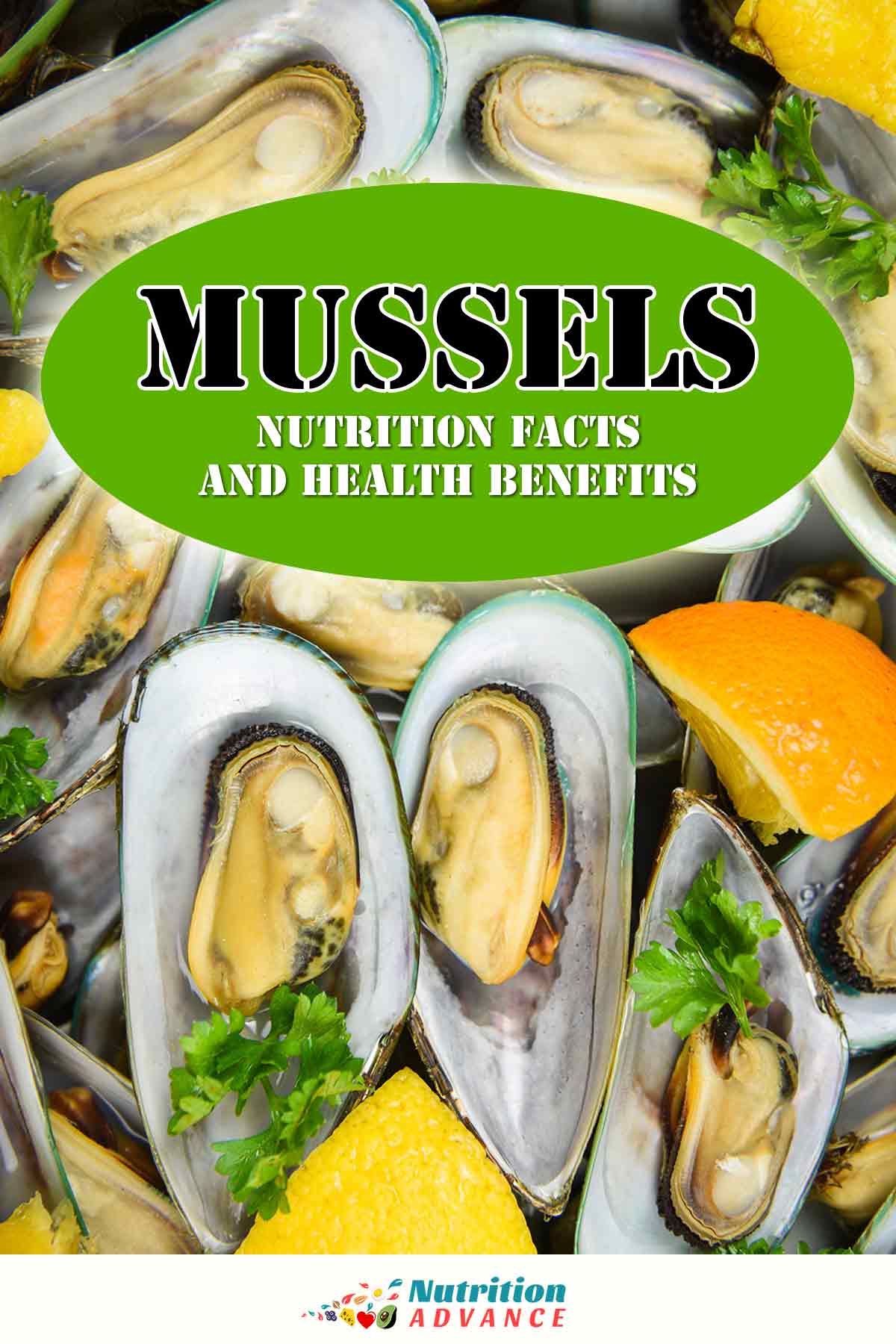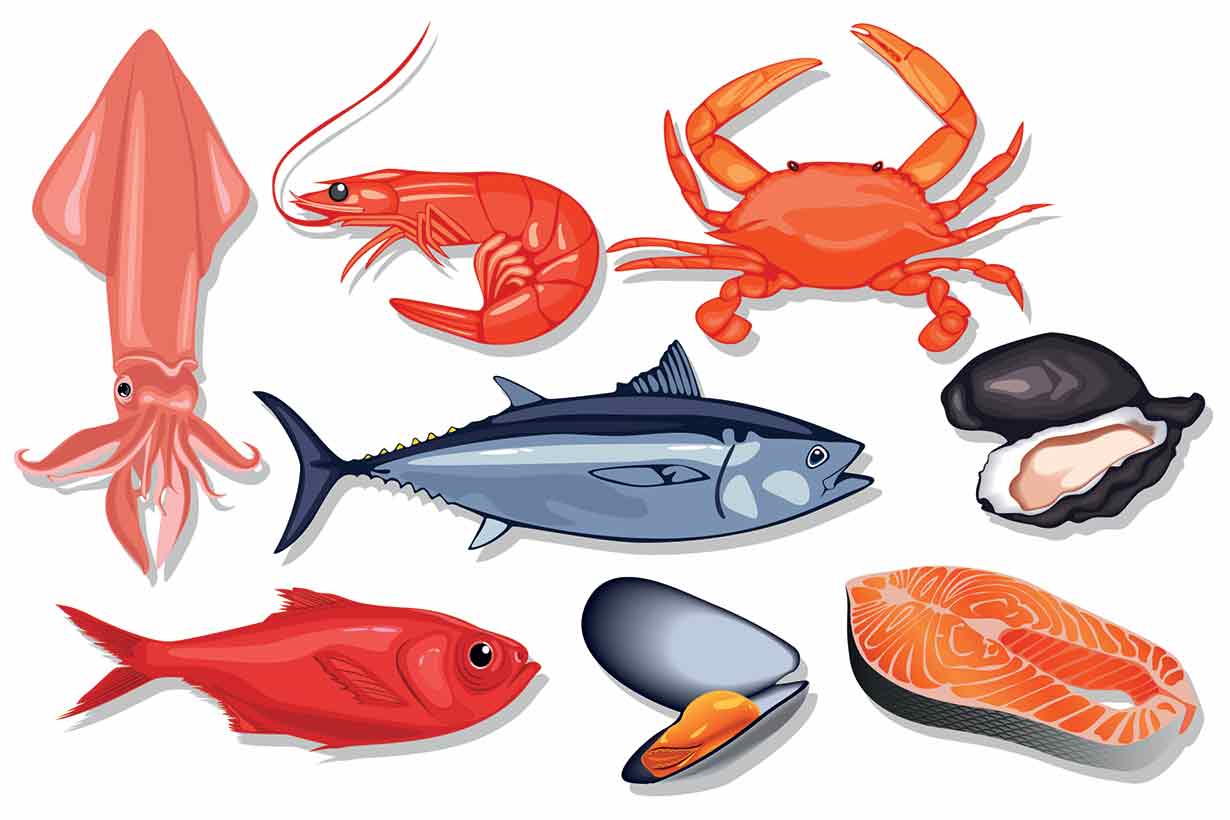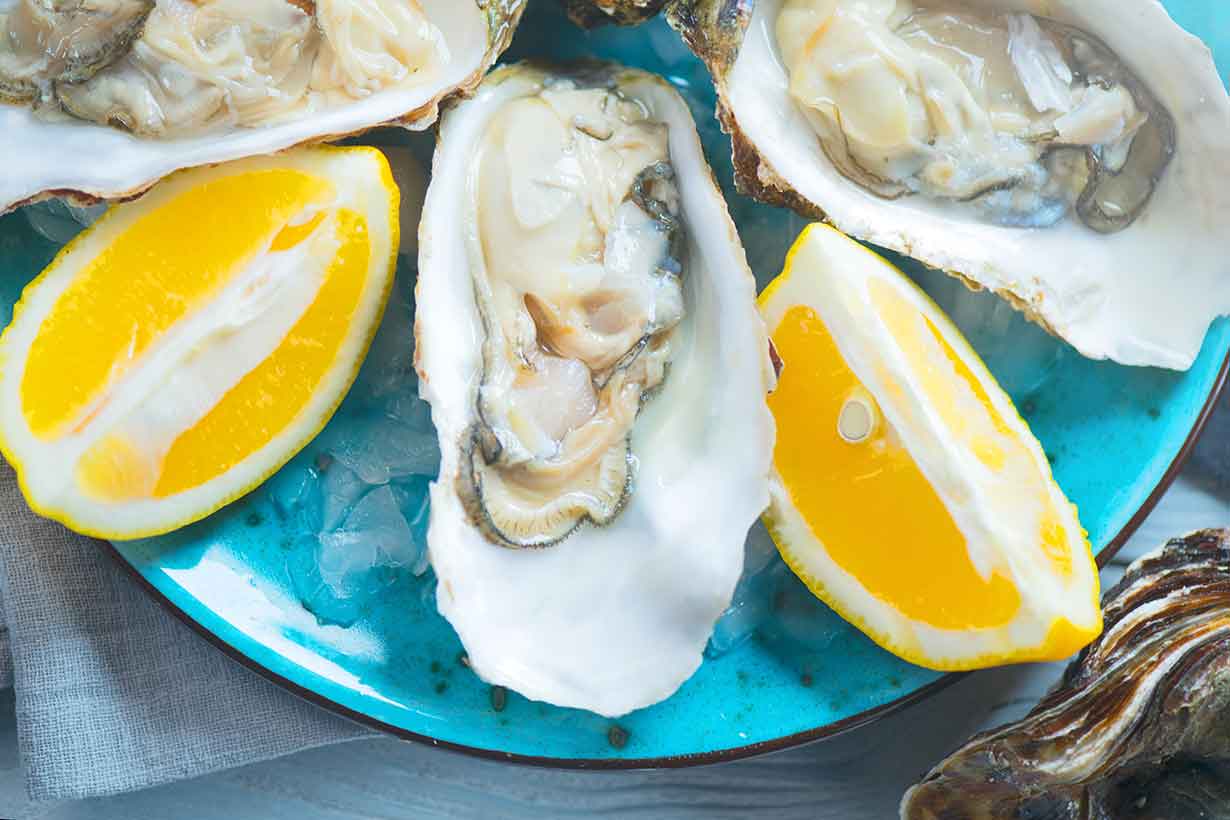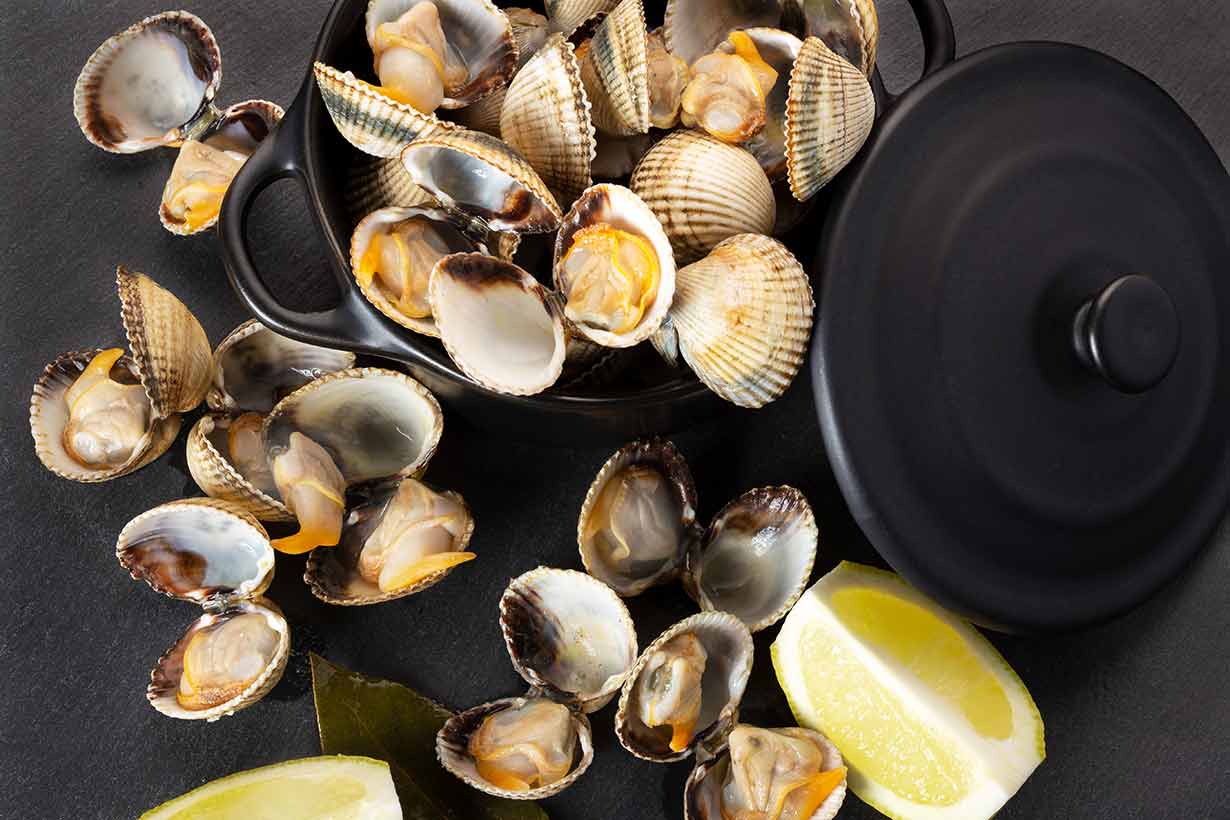Mussels are a type of bivalve mollusk, and they live in both freshwater and saltwater environments.
Mollusks are one of two distinct types of shellfish, and this group also includes clams and oysters.
Mussels are among the most popular seafood varieties, and they offer exceptional nutritional value.
In this article, we take a more in-depth look at the nutrition profile and potential benefits of mussels.
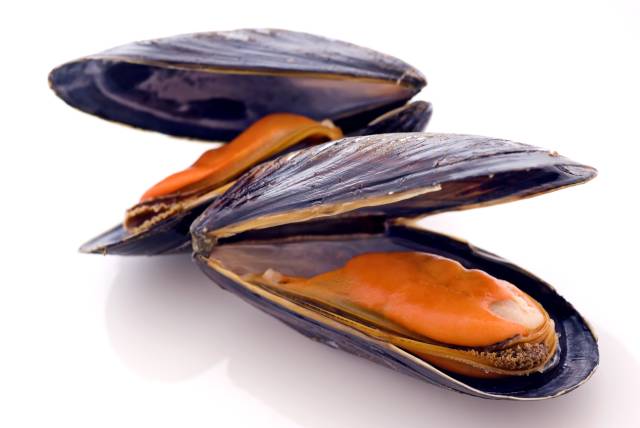
Mussels have an excellent nutrition profile
The following data shows the nutritional values of mussels per 3.5 oz (100-gram) cooked serving (1).
| Calories/Nutrient | Amount |
|---|---|
| Calories | 172 kcal |
| Carbohydrate | 7.39 g |
| Fiber | 0 g |
| Sugars | 0 g |
| Fat | 4.48 g |
| Saturated | 0.85 g |
| Monounsaturated | 1.01 g |
| Polyunsaturated | 1.21 g |
| Omega-3 | 0.94 g |
| Omega-6 | 0.18 g |
| Protein | 23.80 g |
As the table demonstrates, mussels are a good source of protein, and they contain low-to-moderate amounts of carbohydrates and fat.
Vitamins
- Vitamin B12: 24 mcg (1000% DV)
- Riboflavin (B2): 0.42 mg (32% DV)
- Thiamin (B1): 0.30 mg (25% DV)
- Folate: 76 mcg (19% DV)
- Niacin (B3): 3.0 mg (19% DV)
- Pantothenic acid (B5): 0.95 mg (19% DV)
- Vitamin C: 13.60 mg (15% DV)
- Choline: 65 mg (12% DV)
- Vitamin A: 91 mcg RAE (10% DV)
- Vitamin E: 1.10 mg (7% DV)
- Vitamin B6: 0.10 mg (6% DV)
As shown, mussels are a significant source of vitamin B12 and various other B vitamins.
B vitamins (B12 especially) have a crucial role in energy production, forming red blood cells, and supporting immune and cognitive health (2, 3).
Additionally, mussels provide a rare animal-based source of vitamin C, an essential vitamin with antioxidant functions (4).
Minerals
- Manganese: 6.80 mg (296% DV)
- Selenium: 89.60 mcg (163% DV)
- Iron: 6.72 mg (37% DV)
- Zinc: 2.67 mg (24% DV)
- Phosphorus: 285 mg (23% DV)
- Copper: 0.15 mg (17% DV)
- Sodium: 369 mg (16% DV)
- Magnesium: 37 mg (9% DV)
- Potassium: 268 mg (6% DV)
- Calcium: 33 mg (3% DV)
In addition to their impressive vitamin content, mussels are also a substantial source of minerals.
Among these minerals, mussels provide large amounts of manganese, selenium, iron, zinc, and phosphorus.
Several of these minerals are under-consumed, and some, including iron, are classed as ‘nutrients of public health concern’ due to the prevalence of inadequate intake (5).
Mussels provide DHA/EPA omega-3
Oily fish tends to be the best dietary source of omega-3. However, an assortment of seafood options also provides these essential fatty acids.
Mussels offer almost one gram of omega-3 per 100 gram serving, making them a moderately-high source (1).
Furthermore, this omega-3 comes in the form of docosahexaenoic acid (DHA) and eicosapentaenoic acid (EPA). DHA and EPA are both associated with numerous health benefits, and they reliably increase blood levels of omega-3 (6).
Plant sources of omega-3 are called alpha-linolenic acid (ALA). However, they are not as bioavailable and first need converting into DHA and ALA. Since the conversion of ALA into DHA/EPA is relatively poor, DHA and EPA are the most reliable and bioavailable forms of omega-3 (7, 8).
A higher omega-3 index (blood levels of omega-3) is strongly associated with improved cardiovascular health and a lower risk of adverse cardiovascular events (9).
Mussels are one of the most sustainable types of seafood
In recent times, the environmental impact of food has become a much-publicized issue in the media.
Unfortunately, numerous fish and shellfish species have been subject to overfishing over the past few decades, resulting in depleted supplies (10, 11).
On the positive side, mussels are one of the most sustainable choices of seafood.
There are vast reserves of mussels, and they are grown and harvested in line with strict regulations (12).
Additionally, both wild and farmed mussels have minimal impact on the environment. One reason for this is because mussel farming doesn’t require feed or chemicals, so it leads to no waste or pollution (13, 14).
Are there any concerns about mussels?
Although mussels are healthy, nutritious, and sustainable, they also have some potential drawbacks.
Allergies
Shellfish allergy refers to an abnormal response to specific proteins found within mollusks and crustacean species. With mussels, a protein called tropomyosin is thought to be one of the main allergens (15).
Although the prevalence of shellfish allergy varies around the world, the estimated global prevalence is 0-5 to 2.5% of the population (16).
According to Food Allergy Research and Education, allergies to crustacean species (such as shrimp and lobster) are both more common and more severe. However, allergies to mollusks such as mussels are not uncommon (17).
Shellfish allergy can be extremely serious, and in the case of a severe allergic reaction (anaphylaxis), it can be life-threatening (18, 19).
Foodborne Illness
While relatively rare, foodborne illnesses are another potential concern with any species of shellfish, including mussels.
Similar to other shellfish like oysters, clams, cockles, and scallops, mussels filter the water in their local habitat. If there are any bacterial pathogens present in this water, they could contaminate the mussels (20, 21).
Such foodborne illnesses may include vibriosis, norovirus, and paralytic shellfish poisoning, otherwise known as PSP (22).
More information and safety guidance on avoiding these illnesses is available at the links below:
However, it should be noted that these foodborne illnesses are quite uncommon.
Furthermore, the Centers for Disease Control and Prevention (CDC) advise that any potential risks can be minimized (but not entirely removed) by (23, 24):
- Refraining from collecting wild mussels, particularly those in waters near algal blooms
- Cooking the mussels thoroughly
- Buying mussels from a reputable source
Potential Accumulation of Heavy Metals
Lastly, one further concern is the possible accumulation of heavy metals in mussels.
However, this is very much dependent on the area where the mussels live (25, 26).
Further, several studies that have tested the heavy metal content of mussels mostly demonstrated that they did not exceed existing safety limits (27, 28, 29, 30).
How to use mussels
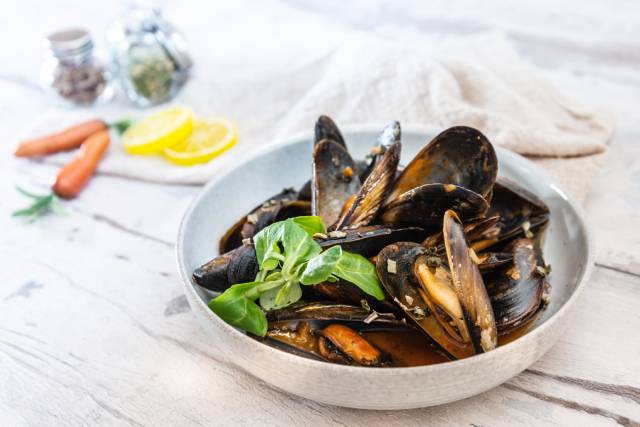
Another benefit of mussels is that they’re affordable, versatile, and straightforward to cook.
There is no specific way of cooking mussels, and it is possible to use any of the following preparation techniques:
- Baking
- Barbecue
- Boiling
- Frying
- Grilling
- Smoking
- Steaming
For those who need some ideas, these 28 quick and easy recipe ideas may be worth a look.
Final Thoughts
Mussels offer exceptional nutritional value, and their best benefit is the broad range of different nutrients they provide.
For example, mussels combine protein with a nutrient-rich package of omega-3 and significant amounts of vitamins and minerals.
While there are some potential concerns to be aware of, it is fair to see that the benefits of mussels outweigh the drawbacks.
Overall, mussels are tasty, affordable, convenient, and they contribute a wide range of vitamins and minerals to the human diet.

